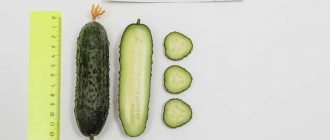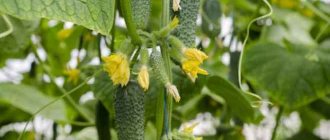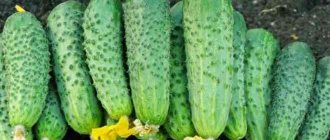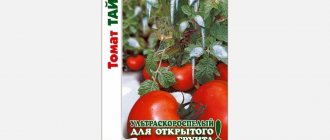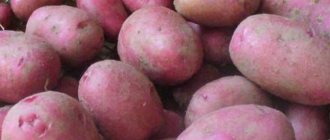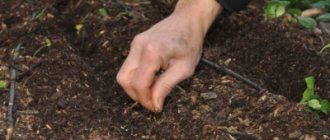Taganay cucumbers are a hybrid sprinter variety from Ural breeders, which is distinguished by intensive branching and a rapidly growing main stem. So, fruiting occurs very early, and from 1 sq. m of planting area, you can collect more than 12 kg of dark green and large-tubercular cylindrical fruits. Why they are attractive, and how to cultivate them correctly, we will look into further.
Cucumber seeds “Taganay”
Cucumbers of the “Taganay” variety
Taganay grows quickly and begins to bear fruit after 35 days
Description of the variety
Cucumber Taganay F1 is a domestic hybrid, which belongs to the early varieties and begins to bear fruit already on the 37-38th day after germination. Thus, with proper care, seedlings develop rapidly, which is why the variety is often popularly called a “sprinter.” We will consider its characteristics separately.
Bushes
The key features of the variety look like this:
- bunch (bouquet) form of fruiting;
- fast development;
- fruit set in abundance.
Thus, 4-6 ovaries can form in one inflorescence, with each node forming 2-3 ovaries.
The plant is characterized by abundant branching, so the main stem is not able to grow rapidly, but this contributes to the formation of a powerful clump necessary for abundant fruiting. Thus, in the small internodes of the plant, many ovaries ripen, which is how Taganai differs from other varieties and hybrids.
The vines of the bushes are semi-open, and the leaves are of medium size, making the harvesting process quite simple. In addition, due to this, the plant is less injured, so it can be cultivated in open soil, spread out. In this case, the plant will grow on the ground without any support. In a sunny garden bed, the cucumbers will spread out as correctly as possible and will develop well.
Crops should not be thickened, because if you leave them more free space, they will grow to their full potential.
Fruit
Ripe cucumbers have the following characteristics:
- color – dark green;
- length – from 6 to 8 cm (cucumbers do not outgrow);
- shape – beautiful cylindrical;
- weight – on average 110 g;
- the skin is thin and pimply with white spines;
- the taste is pronounced, without bitterness.
It should be noted that the hybrid is characterized by similar fruit sizes. Thus, large-lumpy gherkin-type cucumbers, aligned in size, can be used for preservation without culling, including in small jars. They are also suitable for making pickles. Hollow fruits are not found, so pickled and pickled cucumbers are of excellent quality.
Cucumbers tolerate transportation well over long distances and retain their presentation.
Characteristics table
The main characteristics of the hybrid variety can be found below:
| Parameter | Description |
| general description | Self-pollinating early-ripening variety of universal cultivation |
| Originator | Chelyabinsk breeding station. LLC "SSPC Agrofirma MARS", Chelyabinsk region. |
| Cultivation regions | It can be grown in all regions and regions of Russia, including Siberia and the Urals, since it can withstand unfavorable climatic conditions - it continues to grow on cloudy days and in drought. |
| Growing methods | Can be cultivated both in open ground and in film conditions. Outdoors, the plant bears fruit until the first frost, and in a greenhouse or hotbed - all year round. |
| Disease resistance | The variety is resistant to powdery mildew, which is one of the most serious diseases of cucumbers. Thanks to this, gardeners can avoid crop losses. |
| Productivity | When grown in open ground from 1 sq. m of planting area, you can collect about 12 kg of fruit, and in a greenhouse - more than 15 kg. The manufacturer of the seed material assures that with proper care of the plant, about 30-40 kg of cucumbers can be harvested from one bush per season. |
The hybrid variety is characterized by high productivity, so it is enough to plant only 2-3 bushes for the family and winter preparations. This is an excellent option for gardeners who have limited free space, but want to grow several vegetable crops on their plot.
Characteristics
Taganay cucumbers were developed not so long ago, but have already become one of the most popular varieties. The Ural hybrid is suitable for gardeners with small garden plots, allowing them to get a large harvest from a small area. “Taganay” grows quickly and begins to bear fruit already on the 36th day. With proper care, seedlings develop at a fairly fast pace, which is why the hybrid is also called a sprinter. The fruits have a beautiful dark green color (see photo).
The variety is considered the pride of Ural breeders. Cucumbers grow well both in open ground and in greenhouse structures. The main difference is in the shape of the bush during fruiting. A bunch of inflorescences is formed on the plant. One such bouquet contains up to 6 cucumbers. The inflorescences are so interesting, it seems that several cucumbers are formed from one ovary. In fact, this is a whole bouquet of fruiting inflorescences.
they claim that from one bush you can harvest up to 40 kg of delicious vegetables in one season.
For a family and preparations for the winter, only 3 bushes are enough. Therefore, many gardeners choose this variety of cucumbers - there is still free space for other vegetable crops.
Agricultural technology
Taganay is a whimsical variety, so to get a good harvest you need to know the following rules:
- There are two ways to grow cucumbers – seedlings and seeds. The crop should be planted for seedlings from March to April, and planted in the ground in May. In this case, the first harvest can be obtained in June.
- For this variety, it is advisable to choose beds with loose and airy soil. They need to be dug up in advance, all remaining weeds removed, and then organic and mineral fertilizers applied. It is better to use ash and ammonium nitrate as fertilizers, but they must be applied in moderate doses so as not to reduce the amount of harvest and deteriorate the quality of the greens.
In order to prevent diseases in seedlings in the next season, garden soil should be disinfected and cleared of plant residues in the fall.
- Plantings should not be overly thickened. The optimal scheme is no more than two plants per 1 square meter. m.
- Hydride can and should be grown in a spread, but this method is only acceptable in the case of an ordinary garden bed. If it is grown in a greenhouse, the bushes need to be tied up.
- For effective development, the hybrid needs to be provided with proper care. So, during the period of formation of ovaries and ripening of fruits, it must be frequently watered with warm water, fed, pinched and protected from pests.
Agricultural technology or proper cultivation: sowing seeds for seedlings, picking
You can cultivate both seedlings and non-seedlings:
- It is better to prepare the beds for cucumber crops in advance. The soil has been fertilized with organic matter and mineral complexes since the fall. The culture prefers loose, airy, fertile soil;
- To grow seedlings, take garden soil after disinfection. You can also use a purchased substrate if its composition is similar to garden soil;
- In the spring, the soil is dug up, fertilized with rotted manure (at a ratio of 6-8 kg per 1 m2), compost, wood ash and ammonium nitrate (2-3 tsp per 1 m2). Excessive application of fertilizers is not advisable; it is recommended to adhere to the norms of fertilizing with organic fertilizers and mineral complexes;
- Seed material is sown in unprotected soil as soon as the soil temperature reaches +13...+15 degrees, regardless of whether the sowing is carried out in a greenhouse structure or in open beds;
- The seeds are buried 6-7 cm;
- In the regions of the middle zone, cucumber seeds are sown closer to the last ten days of May. This will allow you to enjoy the first delicious harvest of crispy greens already in early July;
- Cucumber seedlings are planted in sunny, windless weather;
Cucumber bushes are placed at intervals of 50-60 cm from each other, leaving a row spacing of 70 to 80 cm.
During maintenance activities, the following recommendations should be observed:
- For irrigation, it is recommended to use only warm, settled water. Watering is carried out quite often, once every 3-4 days, in the morning or evening hours. During a long dry period, the amount of watering is increased;
- After irrigation, the soil must be loosened, simultaneously removing weeds;
- During the season, the cucumber crop needs to be fed 3-4 times. Organic and mineral fertilizers should be alternated;
- Since the hybrid is quite climbing, it needs supports and trellises;
- If you mulch the soil with straw, hay, or mown grass, you can retain moisture in the soil and also prevent the growth of weeds;
- The formation of a bunch bush is carried out in one stem, by blinding 3-4 lower internodes. Shoots and flowers growing from the first 3-4 axils of the plants should be completely removed. As a result, there should be one leaf left on each node, from which a “bundle” will appear.
Planting methods
A hybrid sprinter requires compliance with a number of rules during the landing process. They depend on how cucumbers are grown - seedlings or seeds. We will consider each option separately.
Through seedlings
The transplanting process is very stressful for many sprouts. They get used to growing in the same conditions, so after transplanting to a permanent place it is difficult to take root in new conditions. To make it as easy as possible for seedlings to adapt to a new location, it is initially better to use garden soil, previously disinfected and fertilized, for sowing seeds.
In any case, the substrate for seedlings and the soil in the garden bed should be similar in quality and characteristics. If, when transplanting, you do not take into account the characteristics of the variety and plant seedlings that grew in light and fluffy soil in clay soil without fertilizers, fruiting will be delayed, and the number of ovaries will be small, and therefore productivity indicators will suffer.
To prevent such consequences, it is worth digging up the bed in advance and adding fertilizer to it:
- rotted manure, compost - 6-8 kg per 1 sq. m;
- ash – 200-300 g per 1 sq. m;
- ammonium nitrate – 2-3 tsp. per 1 sq. m.
Seedlings with 3-4 true leaves can be transplanted into such soil. If seeds for seedlings are sown in early March, then work on transplanting seedlings into the ground can be carried out already at the end of May or beginning of June.
On the day of planting, the weather must be sunny and calm, so that the soil in the garden bed warms up from the sun to +13...+15°C. Such conditions for seedlings will be comfortable, so the stress from changing the place of growth will be minimal. If you transplant in extreme heat, windy weather or rain, the seedlings may die altogether, unable to adapt to the new place.
So, on the right day, the seedlings can be transplanted into the beds, adhering to the following scheme:
- the distance between bushes in a row is 40-60 cm;
- aisles between rows – 70-80 cm.
Taganai F1 is a climbing plant that grows freely without support or trellises, but requires sufficient space for growth. Thickened plantings significantly increase the risk of disease development, especially in regions with a humid climate.
Direct sowing
In regions with a temperate climate, work can be carried out in the last ten days of May, so that the first harvest of greens can be obtained in the first week of July. In the case of direct sowing of seeds in pre-prepared soil, the following parameters must be taken into account:
- growing location – sunny, protected from drafts;
- soil temperature in a greenhouse or in a garden bed – within +13…+15°C;
- seed placement depth – 6-7 cm.
After planting the seed, the area should be watered generously with warm water.
Diseases and parasites
Taganay f1 is known for its excellent immunity against powdery mildew, as well as fusarium and cucumber mosaic. The variety gets sick only when there are errors in cultivation: waterlogging, lack of oxygen, or insufficiently clean weeding. At the same time, in hot weather, cucumbers are often attacked by parasites; special attention should be paid to protecting against them.
Root rot
The main cause of this disease is cold irrigation and waterlogging of the soil at the roots of Taganay f1. You can learn about the development of rot by sticky grayish-brown pitting on the basal areas of the stems of the variety. To stop the development of rot, diseased plants are treated near the ground (along with it) with Gamair, or Alirin-B. To prevent the disease, before planting a cucumber, the roots of the variety seedlings are disinfected with Glyocladin or Trichodermin.
Whitefly
The most common pest that attacks greenhouse cucumbers. The larvae of the white-winged butterfly drink the vital juices from the foliage of Taganai f1, leaving the plants to wither. You can get rid of the pest that has settled in the beds by spraying the plantings of the variety with Fufanon or Inta-Vir. In the early stages, a solution of crushed tar soap helps rid the cucumber of insects.
melon aphid
The described variety is affected by aphids in thickened beds in dry summers. Infection can be recognized by the smallest dots on the leaves of Taganai f1. Treatment of plantings with a strong infusion of onion peels, or tobacco with laundry or green soap will help get rid of melon aphids. If the cucumber is heavily infested with aphids, the only way to save the crop is by spraying it with fungicides: Colorado, Aktofit, or Kimix. As a preventive measure, dill, basil, or coriander are planted around the area with Taganai f1 bushes.
Seedling care and harvesting
In order for the plant to bear fruit abundantly, it is necessary to provide it with proper care, which consists of the following:
- Watering . Before and after planting, water the seedlings exclusively with warm water. This procedure should be abundant and regular - once every 3-4 days, in the morning or evening. However, during hot and dry weather, the amount of irrigation should be increased, and on rainy days, reduced.
- Weeding . After moistening the soil, it must be weeded as necessary, carefully removing all weeds so as not to damage the root system of the plant itself.
- Formation of bushes . It is one of the main conditions for proper cultivation of cucumbers. The hydride must be brought into one stem by blinding the first 3-4 lower internodes. The shoots and flowers that emerge from them must also be removed. In the future, you need to leave one leaf at each node, from where the “bundle” will appear.
- Tying up . The plant forms one powerful lash, so there is no need for support. However, to organize a more convenient location of the stem in a greenhouse or open garden bed, you can use trellises. This can also make harvesting much easier. In any case, it is extremely important to ensure free air circulation between the bushes so that excess moisture does not accumulate around them. Otherwise, the plant may be exposed to dangerous diseases.
Experienced gardeners also recommend carrying out preventative measures against diseases, as well as getting rid of pests and parasites.
If you organize competent agricultural technology, you can get the first harvest as early as June. Ripe dark green fruits must be collected daily, otherwise they will inhibit the growth of unripe green fruits and prevent the formation of new ovaries.
Possible diseases and pests
The Troya variety is resistant to MR diseases, cladosporiosis, cucumber mosaic and paronosporosis. They can damage the crop.
Alternaria blight
This disease mainly affects crops growing in greenhouses and greenhouses. The cause of the disease is excessive moisture and lack of good air exchange. The fungus infects the leaves of the Troy cucumber, forming dry white spots on them, which later turn into holes. Correct agricultural technology and constant ventilation of greenhouse shelters will help to avoid such a disease. At the initial stages of the disease, the fungicides “Bravo”, “Quadris”, “Poliram” can save the cucumber.
Anthracnose
This disease appears throughout the growth of the cucumber. Brown spots appear on the leaves. If treatment is not started in time, the plant begins to rot at the base of the stem. The disease appears due to a fungus that forms on the remains of unharvested plants. Medicines against fungi and folk remedies can help the plant: manganese, ash or mustard powder.
White rot
The disease appears due to improper seed treatment and is transmitted mainly at the seedling stage. White wet spots appear on the plant, which later turn into white mucus and cover the entire fruit. The drugs Topaz or Oxychom will help in the fight against the disease.
Pros and cons of the variety
Many gardeners grow Taganai for fresh consumption and for preparing food for the winter. However, some cultivate the hybrid in larger quantities for subsequent sale. This popularity of the variety is due to its following advantages:
- has high yields - about 12-15 kg of fruits per 1 sq. m;
- develops quickly - the first harvest can be harvested 37-38 days after emergence;
- is characterized by a long period of fruit production - after the appearance of the first ovaries, the crop bears fruit throughout the entire season until the first frost;
- in greenhouse conditions it bears fruit all year round;
- has excellent taste and versatility in use - the fruits can be served fresh or used for preservation;
- does not depend on weather conditions - the variety can be grown in areas with an unfavorable climate (dry or rainy summers, extreme heat, cloudy weather - all this will not affect the development and fruiting of the crop).
As for the disadvantages of the hybrid, we can highlight the following:
- The importance of proper care of seedlings, without which it will not be possible to obtain a bountiful harvest.
- A relative disadvantage can also be considered the need for daily harvesting. Without this, the culture will not be able to form fresh ovaries.
- Plant seeds must be purchased annually, since independently prepared planting material will not produce a high-quality harvest.
Characteristics
- Our hero belongs to the so-called hybrid sprinters;
- Fruiting occurs very early - 37 - 38 days after emergence;
- the seeds are distinguished by fast and friendly germination;
- resistance to diseases, especially to powdery mildew, is high;
- the greenery does not barrel when overgrown;
- a universal hybrid can be grown in open and closed ground with equal success;
- the variety tolerates rainy weather and drought without problems;
- The cucumber yield is excellent. In open ground - up to 12 kg/sq. meter, in a greenhouse or greenhouse - up to 15 kg/sq. meter;
- Taganay tolerates transportation well and has excellent shelf life without loss of commercial qualities;
- universal application. In its natural form it is used for salads; it is also good for pickling and pickling. Small greens are ideal for the production of pickles.
Video: secrets of growing Taganay cucumbers
In the following video, an experienced gardener will share the secrets of how to properly grow a long-climbing hybrid of cucumbers from the “Ural Summer Resident”:
Taganay cucumbers are an early hybrid variety for cultivation in both southern and northern regions. Factors such as drought or heavy rain will not affect the quality and quantity of the harvest. So, with the correct organization of agricultural technology, already on the 37-38th day you can get a bountiful harvest of crispy cucumbers of a beautiful cylindrical shape. They can be served fresh and used for preparing winter preparations.
0
0
Copy link
Cucumber variety Taganay (F1)
The Ural Summer Resident company's collection boasts excellent varietal cucumbers that are loved by many gardeners.
Among them, the Taganay hybrid occupies a special place. It was obtained in the classical way, that is, through selection, without the use of genetic modification. But this plant amazes with its capabilities. This cucumber can be cultivated throughout Russia, including where climatic conditions are difficult to call favorable - in the Urals and Siberia. A feature of the variety is intensive branching, which is why the main stem does not grow very quickly. At the same time, a powerful clump is formed, which provides greater yield. The lashes are half open. The leaves are medium-sized, green in color with clearly visible veins. The petiole is long. The leaf blade and petiole are rough to the touch. Internodes are short. 2–3 ovaries are formed in each node. The fruits of Taganay are beautiful, gherkin-type, cylindrical in shape, aligned in size, 8–10 cm long. The skin is dark green, coarsely tuberous, covered with small white spines. The pulp is dense, crispy, without voids, and there is no bitterness. Cucumbers taste great.
Advantages of the Emerald earrings variety
As mentioned above, the variety was included in the State Register of the Russian Federation and zoned almost throughout the country. Of course, in the northern and northeastern regions of the country it is advisable to grow it exclusively in greenhouses, but for more southern regions an unheated shelter or just an open garden bed will be sufficient. This unpretentiousness of the variety is ensured by its high precocity: approximately 1.5 months pass before the first fruits ripen. In addition, there are other advantages:
- The ovaries are arranged in bunches. Regular varieties have one ovary per node, but these bunched cucumbers have 6 to 10 ovaries per node! Due to this morphological feature, the yield of the bush increases significantly.
- The greens are of the parthenocarpic type of development, that is, these cucumbers are self-pollinating. With them there is no problem of lack of insects in the greenhouse.
- Fruits of universal use, suitable for use at different stages of ripening. It is very convenient to preserve them with pickles (3-5 cm) or gherkins (5-8 cm in length). Technical maturity occurs when the fruit length is 9-11 cm. Such cucumbers with an incomparable taste and strong crispy flesh perfectly complement fresh summer salads.
When picking these cucumbers, it is important to remember that they have very prickly thorns, so you need to protect your hands with thread gloves
Thus, this variety has excellent characteristics, it is not surprising that reviews of Emerald Earrings (F1) cucumbers are only positive.


